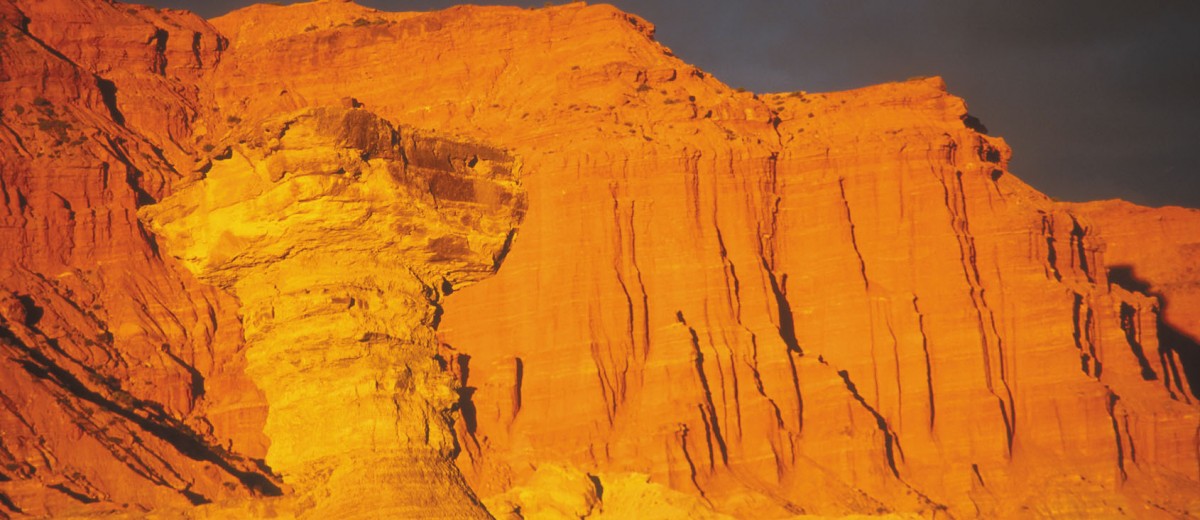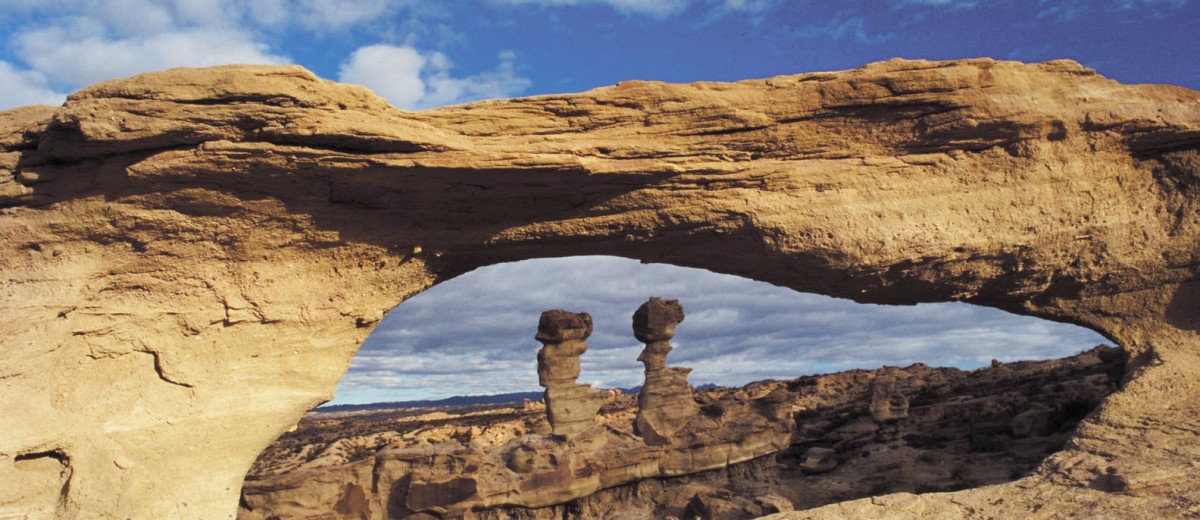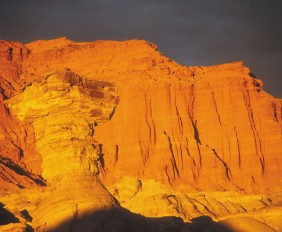Valle de la Luna (Ischigualasto)
Ischigualasto National Park, better known as “Valle de la Luna” (moon-like valley) is located on a large basin, 330 km northeast of the city of San Juan. This 50 km long, 15 km wide park stretches up to Talampaya, in the Province of La Rioja.
It is one of the richest paleontological reserves in the world and features a complete sequence of Triassic period sediments that condensed 180 million years ago. Among the fossils found Eoraptor Lunesis stands out. It was a carnivore predator, and the world’s earliest dinosaur. There were also found buried fossils of amphibians, reptiles, ferns, and a petrified forest.
Approximately 230 million years ago, Ischigualasto was a valley crossed by a river that irrigated a fertile plain land ideal for the grazing of many animals. Groups of rhynchosaurs, cynodonts, dicynodonts, herbivores, and land-based predators lived there. Monsoon storms that battered the region flooded the plains with torrents of water and mud. Most of the animals were buried under the mud and protected from atmospheric decomposition. While the soft tissues disappeared, bones and teeth were infiltrated by water, which left a precipitation of minerals in the pores. This way, the bone starts to get petrified, forming a combination of the original bone (mineral part) and the animals which were precipitated by ground water. Each fossil probably represents 10000 animals that lived on that place.
Visitors can also get an insight into fauna changes like the appearance of new species such as mammals, and the extinction of other species.
The climate in Valle de la Luna is dry and windy with some cool or mild days for 8 months and warm in the summer. Visitors will see guanacos and their offspring, Castilian and Patagonia hares, rheas, viscachas, armadillos, cougars and foxes wandering around the valley.
Flora is scarce, just like in any other desert area and the ground has a moon-like appearance that has made it famous. Not a blade of grass grows on most of this large stretch of land.
In the paleontological interpretation centre you will have the opportunity to see fossils, mounted dinosaurs skeletons, and the recreation of the scene where these fantastic animals used to live.
Valle de la Luna Tour
It starts at the park ranger cabin where the ticket is to be bought. We take a dirt road that goes along several noteworthy sites. Visitors driving their own cars are assisted by a guide throughout the whole tour.
Even though the duration of the tour depends on the number of sites the visitor is interested in, it takes, on average, 2-4 hours.
The colorful rocks have suffered differentiated erosion, which has shaped them in such a way that people compare them with things and animals. The most popular spots are the submarine, the mushroom, the kiosk, the worm, the painted valley, the red slopes, the ravine, Wilson’s villa or the petrified wood.
Esta entrada también está disponible en: Spanish Portuguese (Brazil)








¿Qué te pareció la publicación?